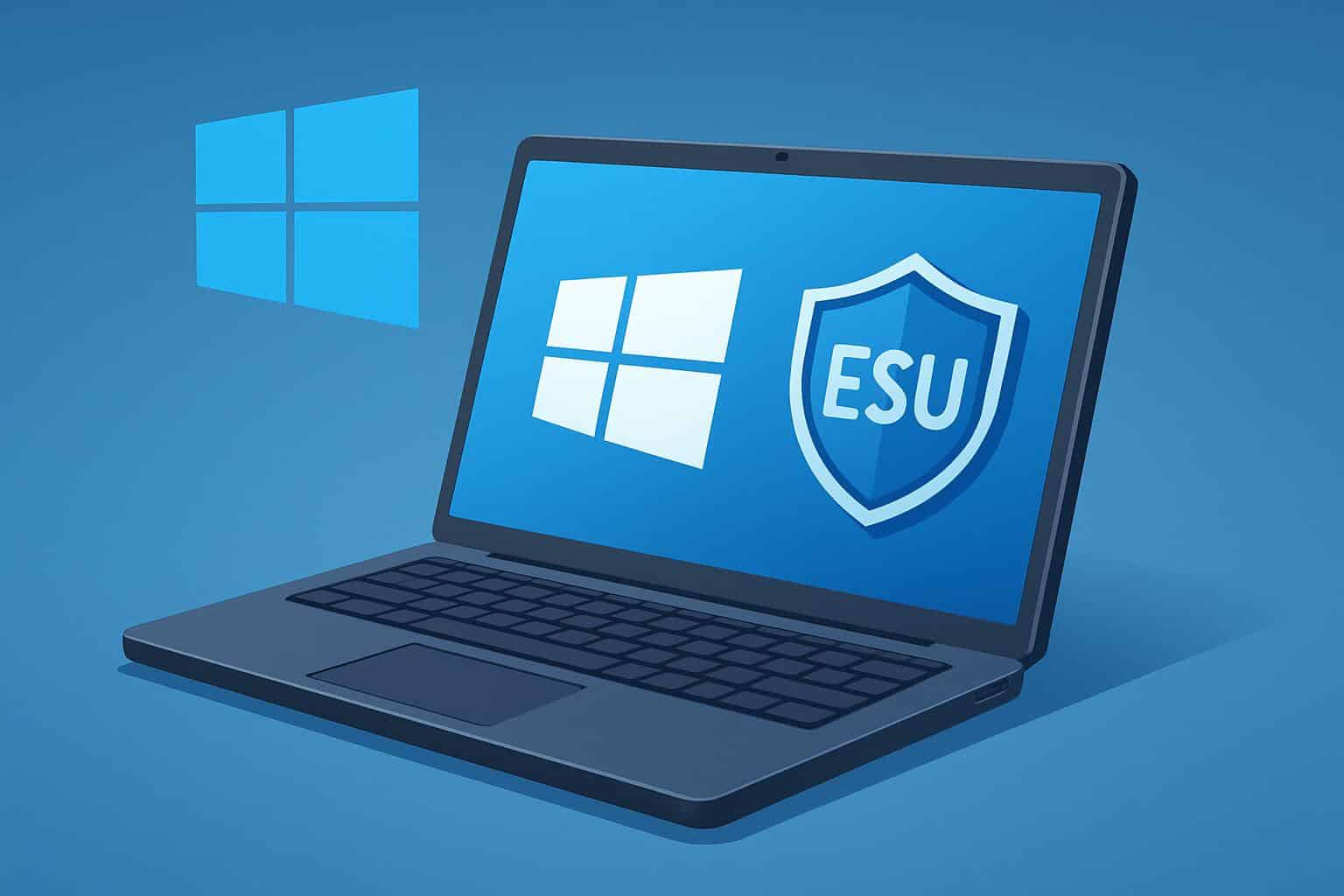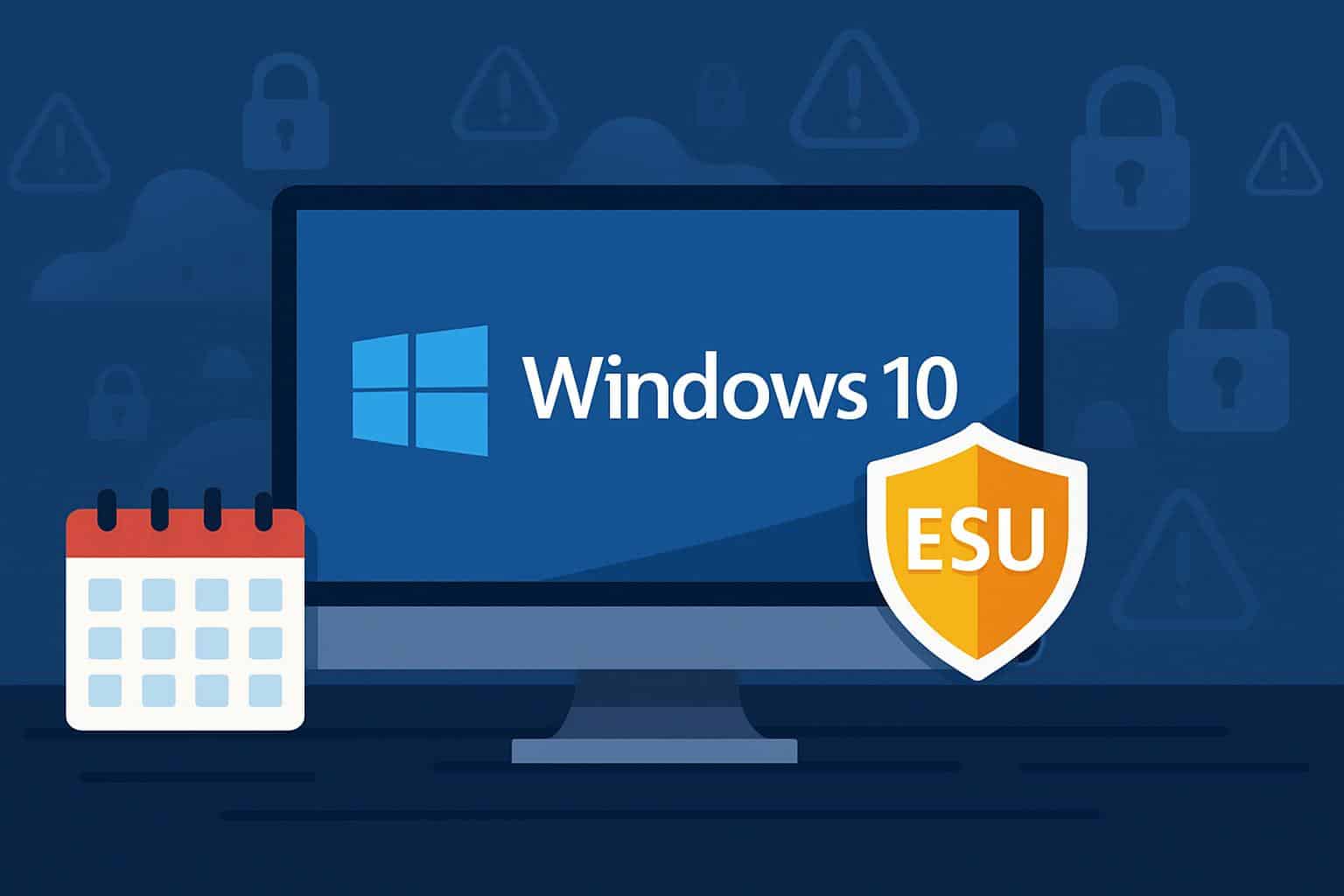Just because support for Windows 10 is coming to an end doesn’t mean you have to run out and upgrade, or put your PC at risk. To stem the tide of recent attacks, Microsoft has introduced a way to continue receiving critical security updates at no cost — that is, if you sign up in time. Here’s what’s changing, who is eligible — and how exactly to take advantage of free protection.
What Microsoft Is Offering for Windows 10 ESU updates
Microsoft’s Extended Security Updates (ESU) does exactly that: It provides critical and important patches for Windows 10 after mainstream support has ended. ESU doesn’t add new features, performance enhancements, or regular tech support. Originally put into place as a paid add-on, Microsoft has brought consumer-facing methods of landing ESU without payment, albeit only for a short period of time.
- What Microsoft Is Offering for Windows 10 ESU updates
- Who Is Eligible for ESU and What You Need to Enroll
- Three Ways to Keep Windows 10 ESU Coverage Free
- Step-by-Step Guide on How to Enroll in Windows 10 ESU
- Why Staying Protected on Windows 10 Still Matters Now
- Windows 11 Upgrade Limits and Thoughts on Office Support
- Bottom Line: How to Stay Secure on Windows 10 With ESU

Microsoft has now confirmed the latter to Windows Central, and it also says that customers in the European Economic Area will get a year’s worth of free Windows 10 security updates. Outside of the region, ESU continues to be available worldwide, and new options for free enrollment are now available for individual users.
Who Is Eligible for ESU and What You Need to Enroll
You’ll need to be on Windows 10 version 22H2 and have an updated device. According to Microsoft, the ESU train — its terminology for the update express lane — is available to all individual users on an ESU-qualified Windows 10 PC, even those who are not Insider participants. Search for a message or a button in Settings that asks you to “keep getting security updates after support ends.”
If you are late to the party, you can also elect for later enrollment; however, until you click “OK,” your PC will not be protected. Policy currently grants coverage for 12 months past the end of support, so by signing up before time elapses you extend your protected window.
Three Ways to Keep Windows 10 ESU Coverage Free
There are three choices for ESU with Windows 10, only two of which are free, if you meet their requirements:

- Redeem Microsoft Rewards points: For one year of ESU coverage, you can redeem 1,000 Microsoft Rewards points. These points can be earned by making searches on Bing, completing daily sets, taking quizzes, or installing Microsoft apps. For context, even just downloading the Bing app can earn a quick boost in points, and daily activities accumulate quickly for heavy users.
- Activate Windows Backup to OneDrive: Turning on Windows Backup to your Microsoft account gives you ESU at no additional charge. You receive 5GB of OneDrive storage for free, and you might need a storage upgrade if you perform hefty backups; however, the ESU subscription itself is free with this option.
- Pay for ESU: If you’d rather not go the free route, you can simply pay for a one-year ESU license for roughly $30 per device.
Step-by-Step Guide on How to Enroll in Windows 10 ESU
- Update to Windows 10 22H2: Go to Settings > Update & Security > Windows Update and install the latest updates.
- Sign in with your Microsoft account: This is needed for Rewards redemption and OneDrive backup. Under Accounts, check that you are signed in within Settings.
- Launch the ESU enrollment wizard: Look for it in Windows Update. You can also go to Settings > Update & Security and look for a tile encouraging you to keep getting security updates once support ends.
- Choose a path: Go with the Microsoft Rewards route (1,000 points), turn on Windows Backup to OneDrive, or pay up. Follow the on-screen prompts.
- Check status: After enrollment and a restart, open Windows Update to ensure your device is receiving Extended Security Updates.
Why Staying Protected on Windows 10 Still Matters Now
Forgoing security updates is not a victimless shortcut. Its monthly releases habitually patch dozens of vulnerabilities, some with high severity such as remote code execution. Agencies including the US Cybersecurity and Infrastructure Security Agency and its counterpart in the UK, the Government’s National Cyber Security Centre, repeatedly warn that running systems without fixing known vulnerabilities is one of the biggest reasons for breaches and ransomware incidents.
Windows 10 is still in wide use — independent trackers such as StatCounter rank it among the most commonly used desktop operating systems — making Windows a target of high value. ESU closes known vulnerabilities as you figure out what to do next.
Windows 11 Upgrade Limits and Thoughts on Office Support
Windows 11’s more stringent hardware requirements, such as specific CPUs and TPM 2.0, ensure many older PCs can’t upgrade. And even though you can carry out unofficial installs, Microsoft doesn’t back them and they may lack important protections. If your device is not one of the qualifying editions, ESU helps you buy time to budget for new hardware by allowing you to continue using it without security concerns.
If you’re using Microsoft 365 apps on Windows 10, the company has said they’ll be supported with security updates for a longer period of time on this OS; however, that doesn’t mean you should expect new features. Think of ESU as a security bridge — not a way to glue your system in place indefinitely.
Bottom Line: How to Stay Secure on Windows 10 With ESU
Take action before the point of no return to ensure Windows 10’s security for another year, free of charge. Upgrade to 22H2, sign up through the Settings wizard, and select either Microsoft Rewards or Windows Backup to OneDrive. If you miss those, the paid option is still available. This is the only practical way for many millions of people running on old hardware to remain safely covered while they work out the optimal time and manner in which to upgrade.

